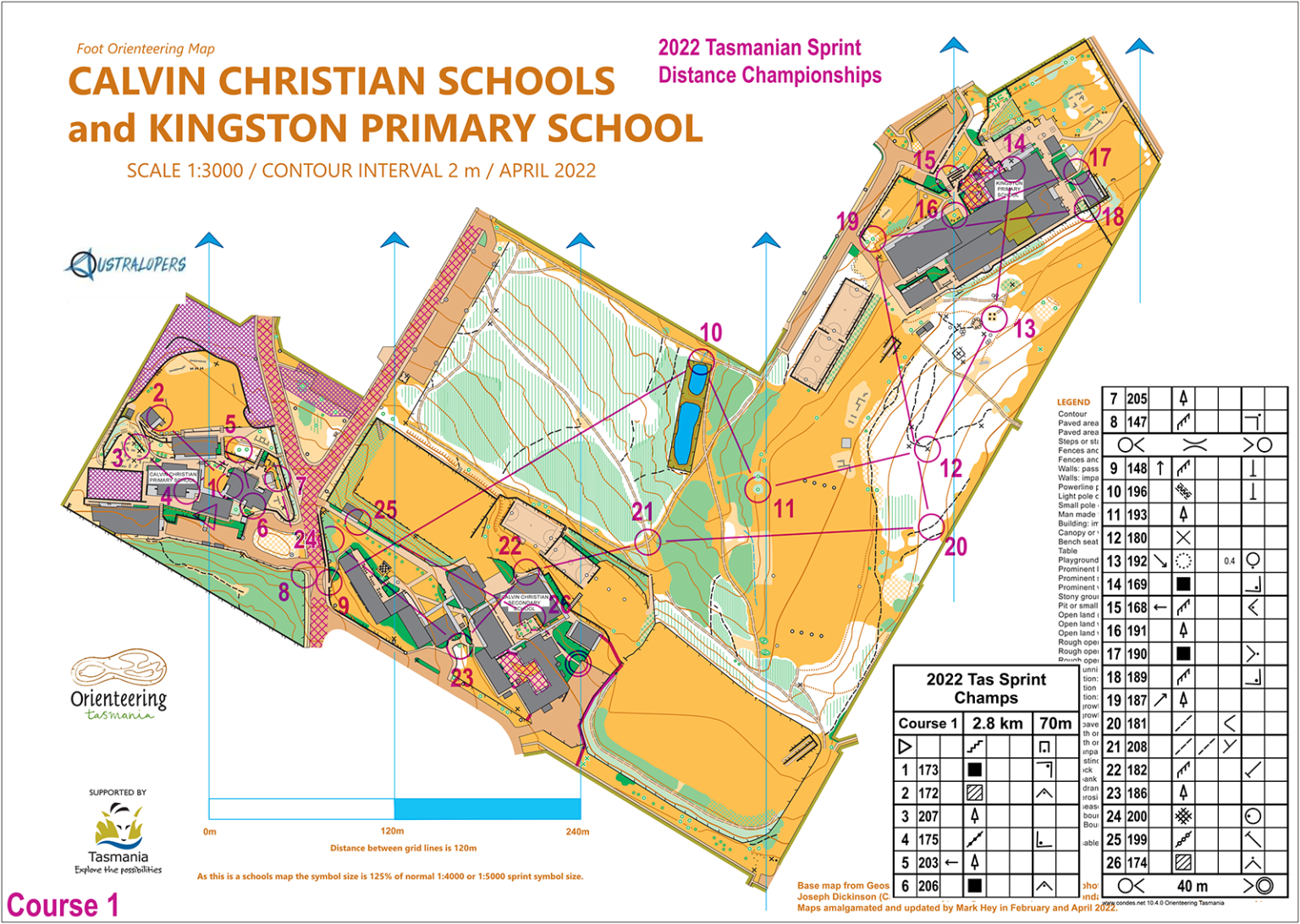Sprint orienteering is about thinking while racing as hard as you can. It’s all quick decision making. Sprint orienteering events mainly take place in urban areas such as campuses and parks. Navigation is not too hard at a walk or a slow jog but is more demanding at a high speed. This is especially the case with constant changes of direction and route choice. If you run fast, then make sure it’s in the right direction!
Sprint orienteering usually takes 15-30 minutes to complete a course. Courses are line format, where you must find all the controls in a set order, in the fastest possible time. Course lengths vary from 2 km to 3.5 km, if you choose the best route! These events use the Sportident electronic timing system which enables you to compare the time it took to get to each control with others on your course.
In sprint orienteering there are three formats: sprint distance, sprint relay, and knockout sprint. In Australia sprint relay and knockout sprint events are conducted as part of our National League.
The Sprint Distance is the most common sprint orienteering type of event in Australia. The format should challenge an orienteer, someone who goes orienteering, to read and translate the map in complex environments such as school and university campuses, and to plan and carry out route choices at their highest speed. The course is planned so that this element of speed is maintained throughout the race. The ability to choose and complete the best route to each control point is the key. Frequent changes of direction are a feature of a good Sprint Distance course. It is a fun and challenging format of orienteering with a course time of around 12 to 15 minutes.

The Sprint Relay format is a spectator friendly event in offering a competition between teams, head-to-head, and with the first to finish being the winner. The format is a high-speed competition and takes place in an urban and park environment. The format is a combination of the Sprint Distance and Relay concepts. At the World Championships the team is mixed-gender; there are four legs and the first and last legs must be run by women. A sprint relay may have teams of 2 with each athlete running twice; these relays may be mixed or gender specific. Teams of 3 are possible also. The time for each leg is normally 12 to 15 minutes.
The Knock-Out Sprint format is an individual multiple-round high-speed competition with head-to-head racing in all but the first round. It takes place in an urban and park environment. There are parallel heats with an interval start to qualify for the knock-out section. In this there are one or more knock-out rounds with several parallel heats and mass starts where the leading runners qualify for the next round. Finally, there is a single mass start race to determine the winner. It is a super spectator friendly format with exciting racing and is an elite focused orienteering format. Our National League normally has at least one Knock-Out Sprint event each year.
You don’t need much gear at all to go sprint orienteering.
Most sprint orienteering events use a Sportident card (“stick”) to check the control points you go to and record your time. Don’t worry if you don’t have one, as at events that use Sportident you can either borrow or hire a stick.
So now you know more about sprint orienteering it’s time to give it a go. Bring some mates, your family or go by yourself, everyone is welcome!
Your first start point is to visit the events page of each of our member associations.
South Australia and Northern Territory
You can also go to our Eventor page. Eventor is the Orienteering Australia events, results and membership portal that lists all orienteering events across Australia.